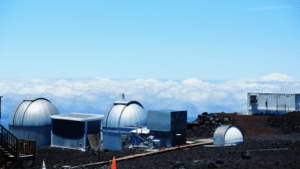
by Roberto Pedraza Ruiz
Last year, human beings reached a new low point, a point that has not been reached for 3 million years and never before in the history mankind. We seem to be in a downward spiral that doesn’t end and doesn’t have a reason to, according to the most extreme scientific forecasts. The atmosphere reached a concentration of 400 parts per million of carbon dioxide (data from NOOA) which puts a variety of factors at risk; threatening life as we know it.
Carbon dioxide captures and stores heat in its particles, so whilst we continue to release it into the atmosphere the temperature will continue to rise. This clearly means we are entering a danger zone, as according to fossil pollen records, the Earth has been in this state before. Three million years ago, temperatures were between 3 and 5 degrees above the past few years’ average of 15 degrees. The sea level was 5 meters higher than the current level and the Arctic was covered by forests instead of ice. This measurement was taken on May 7th 2014 at the Mauna Loa, Hawaii weather observatory. The last time there was a similar amount of carbon dioxide in the atmosphere, humans were not destroying the environment that sustains us and they were not extracting and consuming vast amounts of fossil fuels.
What does it mean to have crossed this invisible line? It means we will see great changes to the climate conditions as we know them, seasons and rain patterns will be altered, droughts intensified and there will be an increase in extreme climate phenomenon. There are few people still alive who, when they were born, breathed air that had less than 300 parts per million of carbon dioxide. Almost all of us have lived in this century. Certainly nobody has experienced a change of more than 100 ppm throughout their lifetime. A change of this magnitude and speed is totally exceptional in the history of our planet. The worst is that by not putting a halt to the emissions we are releasing, babies born today who are starting off breathing 400 ppm, by the end of their lives (estimated in 2050), will breathe air of 600 ppm or more. There is no way we won’t reach this figure while emerging economies such as India, China and Brazil are growing in volume and consumption capacity and emit tons of carbon into the atmosphere annually.
Releasing carbon dioxide into the atmosphere causes the climate to warm up unduly, leading to increased evaporation rates from bodies of water. Something rarely recognized is that in gas state, water vapour stores more warmth. The warming up of the climate is not a trivial matter. In one way or another we are all dependent on the climate where we live. By changing the climate we are changing the function of all the ecosystems which we depend on for our wellbeing and to sustain us and we are therefore changing ourselves.
Many think climate change is a thing of the future but that’s not true. It has been present for some time. Many have suffered the effects and a lot more continue suffering them especially as emissions keep rising. It may be many think we still have time to react but they are wrong. The more gas we emit the greater the increase in temperature and the more difficult it will be to halt global warming. Halting the warming up of the climate has a cost but it is minimal and far smaller than the cost of the damage that will result from the failure to do so.
Unfortunately there are no agreements on the horizon to achieve such goals because the governments of the major powers around the world are unwilling to compromise growth rates in anyway, even though they know they are putting the wellbeing of the population at serious risk in the short and medium term. But what’s worse, it won’t take more than another decade to make it impossible stop the planet warming by another 2ºC. This is a figure that has been agreed to, by many other countries, as one that would dangerously interfere with climate patterns. Unattainable means we cannot avoid it and the alterations that occur, as a result of reaching such a temperature, will continue for centuries. Although many do not recognize it, time is pressing and even though we have already reached 400 ppm, not all the impacts are instant and it will take time to feel their full force. The Earth’s climate system and atmosphere has its own speed, which has been sped up. But the coin is in the air and we are only just beginning to feel the consequences.
